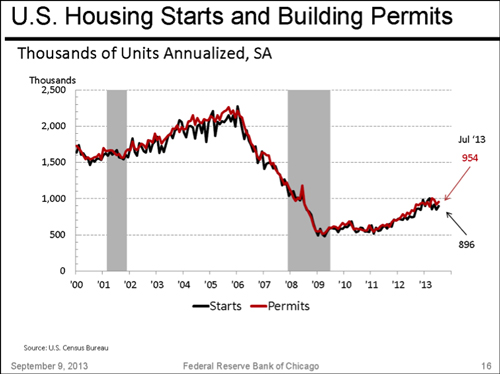
 We’re off to an icy start, both in the weather and the markets. The weather forecast for this year has been cold, cold and colder in Michigan as well as across the country. It seems the temps are below zero more days than not this year. Is it much the same in the forecast for the equity markets in 2014 or will they continue the sizzle of 2013? As goes January so can go the rest of the year. The chart below forecasts the likelihood of this:
We’re off to an icy start, both in the weather and the markets. The weather forecast for this year has been cold, cold and colder in Michigan as well as across the country. It seems the temps are below zero more days than not this year. Is it much the same in the forecast for the equity markets in 2014 or will they continue the sizzle of 2013? As goes January so can go the rest of the year. The chart below forecasts the likelihood of this:

As we finish the month of January with the S&P 500 down almost 3.5%, this means that we are more likely to have an overall negative calendar year than a positive one. Our chances of being up overall this year are less than 42%. Things could warm up though as the year progresses. Historical performance from February through the end of the years with negative Januarys have more often than not provided positive returns.
So even though the Groundhog saw his shadow predicting six more weeks of this harsh winter, it isn’t necessarily a given that the markets will remain icy. You’re probably familiar with the disclaimer, “Past performance is no guarantee of future returns.” Sticking with your long-term investment strategy amidst the noise and backward-looking statistics is the most important to the long-term achievement of your financial goals!
Angela Palacios, CFP®is the Portfolio Manager at Center for Financial Planning, Inc. Angela specializes in Investment and Macro economic research. She is a frequent contributor to Money Centered as well asinvestment updates at The Center.
Source: http://blogs.wsj.com/moneybeat/2014/01/31/morning-moneybeat-january-slump-is-nothing-to-fret/
The information has been obtained from sources considered to be reliable, but we do not guarantee that the foregoing material is accurate or complete. Any opinions are those of Center for Financial Planning, Inc. and not necessarily those of Raymond James. The S&P 500 is an unmanaged index of 500 widely held stocks that is generally considered representative of the U.S. stock market, that individuals cannot invest directly in any index, and index performance does not include transaction costs or other fees, which will affect actual investment performance. Individual investor’s results will vary. C14-003065

























